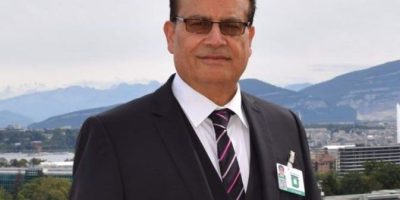The Oil Dynamics

Wajeeha Bilal
Over the years, the tools of warfare may have changed but the trade remains the same. Swords, guns, gauntlets, and grenades have increasingly been replaced by economics. The tip of the economic spear has lately been oil and the influence over its pricing.
The drastic rise and fall of global prices because of fast paced changes in supply and demand often result ina shift in the balance of power among the cartels. Whether it is the natural series of events or man created that lead to the sky-rocketing prices, the political oil controllers depend on the public market and consumers who can do much to change the outcome but are not able to do much in this case. To counter the blow of energy politics, a robust and inclusive energy policy consistent with the needs of today is requiredat a global scale.
The strategic importance of power and fossil fuelsmakes energy the leading factor in geopolitics and international diplomacy. Although there have been significant developments in countering that component with alternative and renewable energy supplies, the influence of oil has still managed to withstand the test of time. Albeit focusing on alternative and renewable energy helps countries move past the geopolitical component of the fossil fuel industry, the technology’s reach has still not met its grasp and the overwhelming majority of global energy systems are still linked or dependent on fossil fuels.South Asia is one such example of a market caught in the crosshairs. Despite a move towards energy transition, the demand still outpaces the gait of alternative fuels. Currently, with its rapidly growing energy sector, the region is poised to play an expanding role as a global energy market and constitute a component of geopolitics where Pakistan, a significant developing countrygrapples with dailychallenges in meeting the rising energy demands and climate change issues.
The energy sector is a pivotal realm at present, where the United States, China, and the OPEC+ are the dominating power players.The United States’long-standing failure to bring peace in Afghanistan and its hasty withdrawal will leave Pakistan’s neighborhood vulnerable to external vectors. China in the meantime is expanding its control and has made Pakistan center of its OBOR and CPEC initiatives, with main contribution in infrastructure projects.China, India &Pakistan constitute a fast developing region that isavailing energy resources to provide for the growing energy and financial demands with much room fordiplomaticcooperation and regional development.
Presently, the demand of energy in Pakistan is greater than supply and the energy weave is based on expensive fuels. To resolve its energy problems, Pakistan is in dire need of implementation of various supply and demand side plans, through an allied energy policy anda proper operative system. Pakistan should be able to make use oflow-costdomestic energy resources with major usage of renewable energy.
As a large developing country, Pakistan is facing many problems, especially related to overcoming poverty and improving the health, education, and employment opportunities for low-income groups. Pakistan has pursued high-cost, short-term fixes while obtaining billions in infrastructure loans, mostly from China, for coal and nuclear plants that could cause financial adversity in the energy sector. The country’s energy problems are profound and deep rooted that have more to do with the inefficient government and its failure than with the supply of resources.
The energy sector is important for development in solvingPakistan’s problems, but corruptcontribution, weak governance, and poor budgetary control of the sector are major obstacles. Unlike India or China, Pakistan is a small contributor to the greenhouse effect, but it could escalate in the future owing to the poor investment and its choice of fuel. Rising energy demands from increasing urbanization, incomes, and population have placed pressure on domestic resources and eventuallyPakistan has increased its reliance on fossil fuel imports, though according to the US Geological Survey, it has petroleum resources of 164 million barrels of oil and 24.6 trillion cubic feet of natural gas.
United Nations (UN) Secretary-General António Guterres, in his closing remarks at the UN Climate Conference in 2019, called for countries to stop building coal plants after 2020. It might be overly ambitious for developing countries like Pakistan, but it would be more appropriate and helpful for its future to focus future projects on renewable energy by improving its policies for the energy sector. Pakistan is currently focusing on energy projects under its new renewable energy policy to enhance the exploration of domestic energy resources and engage foreign investment to uplift its economy.It is focusing on promoting oil and gas exploration opportunities aiming to attract investment from Saudi Arabia, the UAE and other Gulf countries, to provideviable energy supply, lower its energy imports and boost its economy.
In a meeting with the UAE Ambassador Hamad Obaid Ibrahim Salem Al-Zaabi, Pakistan’s Federal Minister for Energy Minister Omar Ayub Khan analyzedthe development on the current petroleum projects and discussed ways to promote the Pak-UAE cooperation in the energy sector. “The collaboration in the energy sector would provide a fresh impetus to economic ties between the two brotherly countries” the UAE envoy said.
Pakistan’s Finance Minister Shaukat Tarin has also stated in a press conference, that an understanding had been reached with Saudi Arabia for revival of its oil facility on deferred payments. He informed that Pakistan has also availed the defer oil payment facility from Saudi Arabia and Petroleum Levy would increase in next fiscal year. However, the government is expecting that oil prices in international market would decline after lifting the ban on Iran. The government will have the chance to consume the levy by retaining the impact of decline in international oil price.
Pakistan’s future could shape and elevate from successful investment by international financial institutions, in solar and wind projects along with its large hydro development projects, at the same time funding and enhancing its projects and future policies. It is crucial to improve the conditions and function of its present policies keeping with the dramatic climate change and global warming.However, the biggest hinderance towards the implementation of any measure comes from incompetent leadership. A long draft of hopeful policies can have no effect unless there is a clean ambition to implement them with honesty by the leaders, who desire to serve the interests of their country. Fundamental reforms and policies can always followan efficient governance.
(Wajeeha is the author of “The Conscious Ego”, “The Beautiful Present”)
Related News

The quite mental strain on students
Komal Waqar In Pakistani universities, it is common to see students sitting quietly in classroomsRead More

Rubio’s Gaza Signal and Pakistan’s Strategic Crossroads
Qamar Bashir When US Secretary of State Marco Rubio publicly acknowledged Pakistan’s willingness to “considerRead More


Comments are Closed